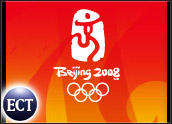
The stakes are rising in the race to develop multimedia search engines capable of searching, indexing and cataloging the growing amount of music, images and video available on the Web.
The challenges are substantially more involved and complicated than traditional text searching. A lack of resources devoted to tagging and marking up content for use as metadata, the lack of adequate metadata databases and the difficulties associated with indexing dynamic content are cited as hurdles that need to be overcome.
Wider use of metadata should go a long way, but leading edge multimedia search technology developers are working on a range of other means and methods to improve users’ ability to seek out, find and make use of content.
Higher Level Patterns
mVisible, a distributor of independent digital music and multimedia content via the Web and mobile phone networks, uses “fairly typical” means of searching for and categorizing content, explained cofounder and chief technical officer Myk Willis.
“We extract some degree of metadata from the content files that are ingested into the system, such as artist, song, album, etc., and we store that in our database. We use off-the-shelf database search components to help us categorize and locate media at runtime,” he said.
While not directly involved in developing multimedia search technology, distributors such as mVisible nonetheless have a vested interest in its development and hope to take advantage of advances as they emerge.
“I think some of the most exciting work with multimedia search has to do with extracting higher-level information from content files, and using that to associate content. Instead of just simply extracting metadata, companies like Pandora try to identify higher-level patterns that can help identify a song as being in a particular style or mood.
“There are also advances being made in automatically transcribing content in audio and video files so that they can be more easily searched and associated,” Willis told TechNewsWorld.
Categorizing Multimedia Content
Noank Media on Sunday announced its plans for the online distribution of a range of moving image media — films, television, commercials and user-generated videos — in China at the Toronto International Film Festival. The launch of a global multimedia Web service, dubbed Feilio, is to follow on Oct. 28 at Tsinghua University in Beijing.
Noank founder and CEO Paul Hoffert listed six of the most commonly used means digital content distributors and search engine providers are using to categorize, index and enable multimedia searches: by media type; by metadata (such as title, author, producer, lead artist and publisher); by genre; by recommendations specified by human authorities, computer programs or a combination of both; by aspects of data in the file (colors, rhythmic intensity) specified by human authorities, computer programs or a combination of both; and by user or authority ratings.
By Authority of the Peers
The emergence of “wisdom of the crowd,” or peer authority, as equally or more important than traditional authorities, such as eBay and Amazon, has been one of the key milestones in the development of multimedia, Hoffert told TechNewsWorld.
Peer authority is also the means by which Noank aims to overcome challenges such as a lack adequate content mark-up by rights holders and metadata database design, especially given its focus on the Chinese and other East Asian markets.
“Noank has particular problems associated with our launch in the China region and its associated issues of language — traditional Chinese characters, simplified Chinese characters, Mandarin spoken language, Cantonese spoken language — and the need for culturally sensitive filtering, [such as] censorship of pornography and politically sensitive material. Typically, media files have not been marked up with subtitles for video media and translated song lyrics and document files,” he said.
Noank plans to use its large user base of university students — now numbering 24 million — “as a pool of volunteer and low cost peer authorities for markup tasks,” Hoffert explained. “Noank will implement levels of authority ranging from ‘provided by rights holder’ to ‘experts’ — professional reviewers, etc. — to peers, some of whom may become elevated to the class of experts by virtue of their community acceptance.”
Search results will eventually reflect levels of authority, he added.
Multimedia and Social Networks
Social networking sites have been big drivers of online multimedia content. They’ve grown quickly and now command huge valuations from large, well-established and acquisition-minded media networks and search engine providers keen to capitalize on the growing demand for and use of online multimedia.
With more than 18 million unique users each month, Imeem is one of the fastest growing social media networks on the Web. “We are a true multimedia site, with music, video, photos and text — comments, blogs, tagging and messaging,” commented Steve Jang, vice president of marketing and business development.
The ability to search for, index and respond to users’ requests for various media and then enable users to use the material when connecting with other people with similar tastes is key to attracting members and differentiating Imeem from competitors.
“Search is very important to our user experience on Imeem and must be a strong social search tool as well as an easy-to-use media search tool. Imeem has built an in-house solution to categorize, index and enable searches,” Jang told TechNewsWorld.
“We rely on a combination of metadata from content and users to create a robust index. Our solution also analyzes user-behavior for categorization purposes. The result is a seamless unified search across all media types and across our online community.”
Performance and Scale
Performance and scalability are two of the main challenges facing Imeem and other social networking sites, according to Jang.
“In addition to providing a vast quantity and breadth of data on the site, Imeem is a social network, which means we take into account the relationship between people and groups on our site to offer more relevant search results,” he said.
Giving users the ability to create music and video playlists gives rise to tracking relationships between different kinds of media, and that contributes further to a sophisticated form of social search, Jang continued.
“These factors alone create hundreds of millions of interrelationships,” he said. “With over 18 million unique users per month, our goal is to accurately index and provide targeted search results to our community with incredible performance.”











































